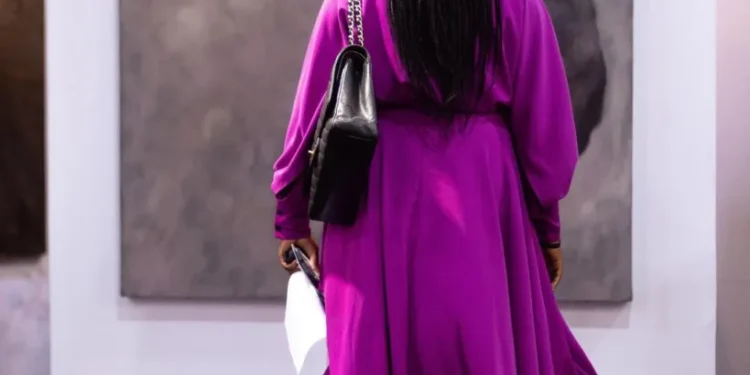Visiting art exhibitions is a pleasant way to escape into a world of colourful hues and eye-catching paintings. Through human ingenuity, it acts as a portal to the wonders of our planet. These gatherings provide us with a singular chance to further extend our horizons and heighten our gratitude for the amazing gift of artistic ability.

The art gallery becomes a place where thought and admiration come together, whether one is there alone or with others. In the serene environment, you’ll frequently see guests standing thoughtfully, absorbed in the pieces of art in front of them. This scene may seem confusing to beginners or those venturing into the world of art galleries for the first time.

Naturally, questions like, “What are these visitors scrutinizing?” come up. Which specifics are they concentrating on? Let’s examine ten essential components that you should pay special attention to when visiting art exhibitions or fairs.

1. Art Titles: When you enter an art exhibition, it is important to pay attention to the titles and artists. This enhances your understanding by providing insight into their imaginative narrative. Knowing the artists and titles also allows you to research and learn more about their artistic style and background, adding depth to your appreciation of their work. Additionally, understanding the titles can provide context and meaning to the artwork, allowing for a more meaningful interpretation.

2. Art Medium: Understanding the artist’s medium and technique broadens your appreciation. Research different mediums, such as acrylics and sculptures, to gain a better understanding. Please take note of how the paint or clay is applied; it adds to your admiration of the artist’s abilities and creativity. This knowledge enhances your overall understanding and enjoyment of the artwork.
3. Composition and balance: Examine the arrangement of elements in the artwork to understand its structure. Balance, harmony, and focal points should all be considered. This analysis particularly illustrates the artist’s skill at directing viewers’ attention. Also, examine the composition to see how the parts work together to create balance and focal points. This demonstrates the artist’s expertise in directing the viewer’s gaze. Take note of how the many components of the artwork join together to form a visual puzzle to be solved.
4. Artistic approaches: Pay attention to the artist’s inventive approaches in the creative process, such as brushwork, layering, and unique procedures. These inventions defy convention and revolutionize the art world. Also keep an eye out for these unique concepts, which demonstrate the artist’s innovative thinking.

5. Colour Palette: Observe the colours in the artwork and how they express feelings and meanings. Notice how colours evoke emotions, creating depth and meaning. They can convey tranquillity, passion, or even sadness, adding another layer of interpretation to the artwork. Additionally, juxtaposing different colours can create contrast and highlight specific elements, further enhancing the overall composition.
6. Attention to Detail: Pay close attention to the artwork’s minor nuances. Artists frequently incorporate complex features that are easy to overlook at first glance. They can show a great deal about the artist’s talent and inventiveness.

7. Context: It is critical to investigate the artwork’s historical, cultural, or social background. This context profoundly influences how the artwork is seen. It further sheds light on the artist’s motivations and societal influences. You are allowed to conduct online research. This knowledge can reveal the prevailing artistic movements, political events, or cultural shifts that may have shaped the artist’s intentions and message. Additionally, exploring the social background can provide insights into the intended audience and how the artwork may have been received at that time
.
8. Emotional connection: Take note of how the art makes you feel. Art can make people happy, sad, or excited. Indeed art is subjective, and your reaction is valuable. It also allows you to appreciate the artwork’s power to evoke specific emotions and understand its significance in conveying certain themes or ideas.
9. Artist’s Statement: Read the artist’s statement if it is available. It reveals the artist’s objectives, ideas, and concepts behind their work. This deeper understanding can enhance your appreciation for the piece and provide context for its emotional impact. Additionally, this would allow you to engage the artist in an enriching dialogue.

10. Interaction with Others: One of the most enjoyable aspects of attending art exhibitions is discussing the artwork with other visitors. Hearing different points of view can help you have a better understanding of the artwork. Make contacts and learn while exchanging perspectives.
Art exhibitions are more than just viewing pictures. It’s also about discovering stories, emotions, and creativity. Trust your instincts, engage with titles, understand techniques, and decipher messages to become an art connoisseur and enrich your experience. Allow your senses to wander and explore the myriad expressions. Above all, have fun.










